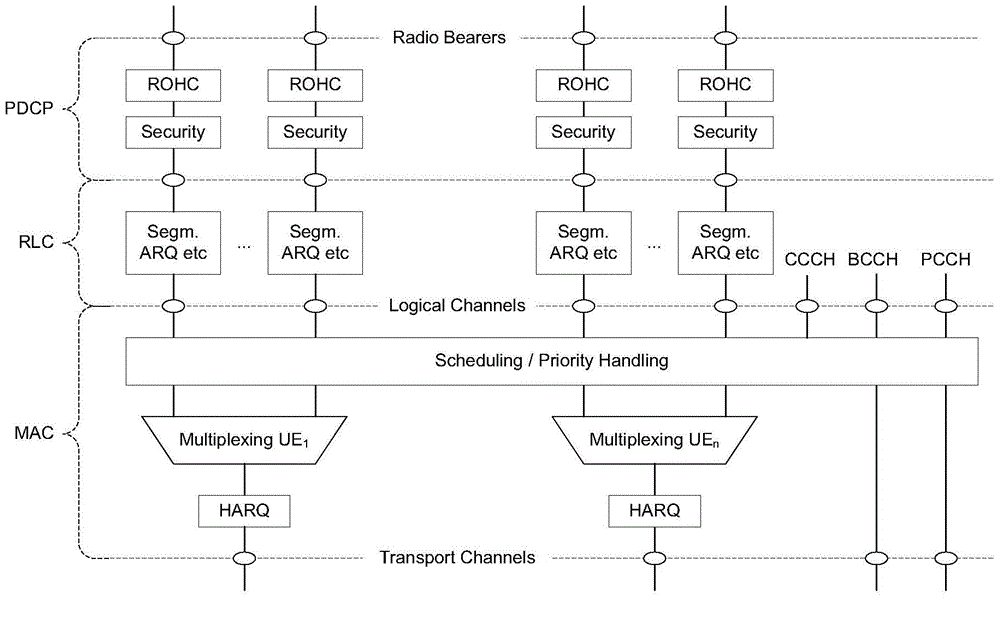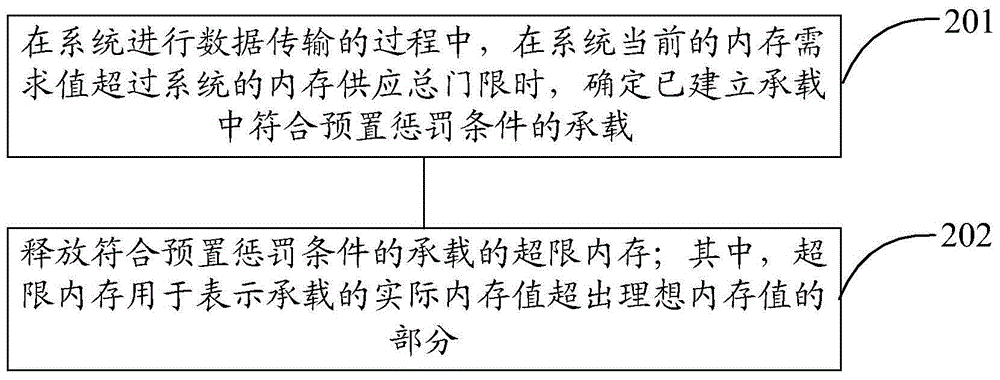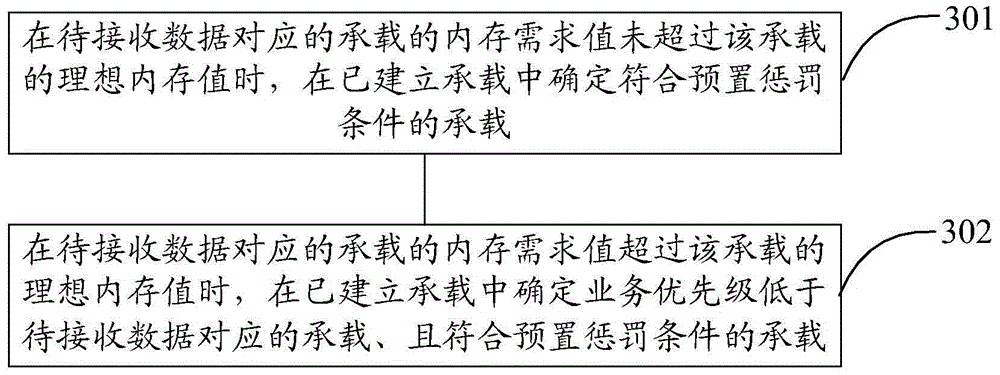Control method and device for base station memory
A memory and base station technology, which is applied in the field of base station memory control, can solve problems such as waste of memory resources, waste of bearer memory, difficulty in meeting multi-bearer QoS requirements, etc., and achieve the effects of improving utilization, realizing dynamic allocation, and solving waste of memory resources
- Summary
- Abstract
- Description
- Claims
- Application Information
AI Technical Summary
Problems solved by technology
Method used
Image
Examples
Embodiment 1
[0079] refer to figure 2 , which shows a flow chart of the steps of Embodiment 1 of a method for controlling memory in a base station according to the present invention, which may specifically include:
[0080] Step 201. During the data transmission process of the system, when the current memory demand value of the system exceeds the total memory supply threshold of the system, determine the bearers that meet the preset penalty conditions among the established bearers;
[0081] In the embodiment of the present invention, the data transmission process of the system may specifically include: the process of the system receiving data and the process of sending data by the system, such as the aforementioned process of PDCP receiving data and PDCP submitting data to RLC.
[0082] In a specific application, data can be received for the established bearer. When the current data to be received arrives, if the current memory demand value of the system exceeds the total memory supply th...
Embodiment 2
[0094]The method for controlling memory in a base station in this embodiment may further include the following optional technical solutions on the basis of the first embodiment above.
[0095] In this embodiment, the aforementioned preset penalty conditions may specifically include: the carried memory has an overrun characteristic and a rollback characteristic.
[0096] Among them, the overrun feature can be used to indicate that the actual memory value of the current bearer is greater than the ideal memory value; the fallback feature can be used to indicate the difficulty of the current bearer being released. For example, in a specific application, some caches in PDCP store For PDCP SDUs not submitted to RLC, these data can be easily released when the memory is tight, so these caches are relatively easy to release, and these caches can be considered to have rollback characteristics; while other caches in PDCP store The most important thing is the PDCP PDU that has been submit...
Embodiment 3
[0107] refer to Figure 4 , which shows a flow chart of steps in Embodiment 3 of a control method for base station memory according to the present invention, which may specifically include:
[0108] Step 401. When the system receives data, when the current memory demand value of the system exceeds the total memory supply threshold of the system, determine the bearers that meet the preset penalty conditions among the established bearers;
[0109] Step 402, releasing the overrun memory of the bearer that meets the preset penalty condition; wherein, the overrun memory is used to indicate the part where the actual memory value of the bearer exceeds the ideal memory value;
[0110] In a specific application, if the current memory demand value of the system still exceeds the total memory supply threshold of the system after finding the penalty bearer and releasing its overrun memory, you can continue to find a new penalty bearer to release according to the above-mentioned steps for ...
PUM
 Login to View More
Login to View More Abstract
Description
Claims
Application Information
 Login to View More
Login to View More - R&D
- Intellectual Property
- Life Sciences
- Materials
- Tech Scout
- Unparalleled Data Quality
- Higher Quality Content
- 60% Fewer Hallucinations
Browse by: Latest US Patents, China's latest patents, Technical Efficacy Thesaurus, Application Domain, Technology Topic, Popular Technical Reports.
© 2025 PatSnap. All rights reserved.Legal|Privacy policy|Modern Slavery Act Transparency Statement|Sitemap|About US| Contact US: help@patsnap.com



